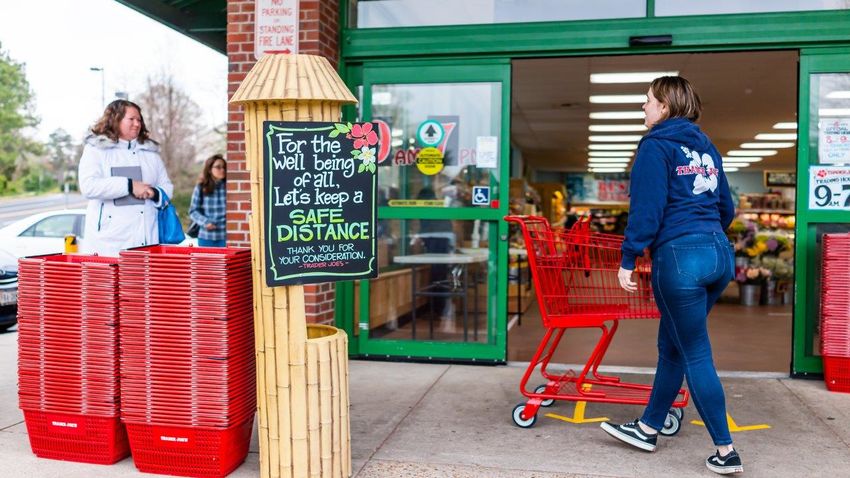
Efforts to contain the spread of COVID-19 have been built around minimizing gatherings of people in public places. A new study from Temple University puts real-life data from the early months of the pandemic behind the wisdom of that strategy. The study also suggests a reason why, early in the outbreak, Americans in urban and rural environments may have had different perceptions of the threat that the virus presented.
In an article published in Preventing Chronic Disease, co-authors Abby Rudolph, an infectious disease and social epidemiologist in the College of Public Health, and Xiaojiang Li and Jeremy Mennis, from the Department of Geography and Urban Studies in the College of Liberal Arts, correlate changes in visits to public locations with future changes in new COVID-19 case diagnoses.
“We wanted to see how travel during the shutdown period was associated with cases that arise,” Rudolph said. The basic reproduction number for an infection, called R0, is influenced by three factors, Rudolph explained: the probability of infection per contact between an infected and susceptible individual, the average rate of contact between susceptible and infected individuals, and the average duration of infectiousness. Social distancing can minimize the second factor.
The Temple researchers found that, for the time periods measured, decreases in visits to locations such as stores and workplaces did correlate with a reduced rate of new COVID-19 cases reported in the same counties 11 days later. They used data from Google’s Community Mobility Reports, which aggregates anonymous, county-level data showing visits to 6 different types of locations: retail and recreation, grocery and pharmacy, transit stations, workplaces, parks and residential locations. The researchers measured percent changes in visits to these locations during stay-at-home directives, compared to same-day-of-the-week visits in February 2020, before the virus outbreak (a Friday would be compared to a prior Friday, for instance). That data was paired with COVID-19 case data from the New York Times. Staying at home correlated with a slower COVID-19 case growth rate.
“It shows that in the early months of the outbreak, through April, limiting travel to these public locations and staying home did have a significant impact,” Rudolph said. “Except for parks. We didn't see a significant association with going to parks.”
To get a sense of geographical differences, the researchers also broke out county-by-county data using the six-level urban-rural classification scheme from the National Center for Health Statistics. This scale ranges from the most populated metropolitan areas to the least. The analysis showed a strong link between changes in mobility and future changes in new COVID-19 diagnoses in urban counties, but was not as strong in more rural counties. This difference could account for perceptions in more rural areas, in the early months of the outbreak, that the COVID-19 threat was exaggerated, and it possibly led to decreased vigilance against it.
“You can engage in all the risky behaviors you want and you will not see transmission if there is no disease in the population,” Rudolph said. “Once someone with disease enters the population, things change quickly if behaviors aren't modified.”
As part of the paper, the researchers did a follow-up analysis through June 19, and found that rural areas became less different from urban counties as COVID-19 spread farther into the country. By May, the researchers write, “the initial disease hotspots were cooling, and many states began to phase out mobility-reducing directives. This was followed in June by a rapid increase in COVID-19 cases in Florida, Arizona, and other states that did not act aggressively to reduce mobility and encourage mask-wearing, with some states reinstating mobility reduction directives in response.”
